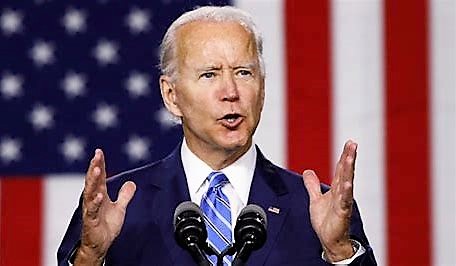Segun Atanda/
Russia has described the latest military moves by the United States (US) as a “destructive step”.
The US decided to deploy more than 3,000 troops in Germany, Poland, and Romania as Moscow continues to build up its forces.
Russia’s deputy foreign minister said that the US response would make it harder to reach a compromise over Ukraine.
Alexander Grushko said the move by the US president, Joe Biden, would “increase military tension and reduce the scope for political decision”, and would “delight” Ukrainian authorities, who would continue sabotaging the Minsk agreement “with impunity”. The Minsk agreements of 2014 and 2015 were designed to reach a political settlement in the east of Ukraine, including greater autonomy.

The US on Wednesday said it was sending 1,700 troops from the 82nd Airborne Division to Poland, while a headquarters unit of about 300 from the 18th Airborne Corps will move to Germany and a 1,000-strong armored unit was being transferred from Germany to Romania.
The move is in response to Russia’s deployment of more than an estimated 125,000 troops within striking distance of the Ukrainian border, including nearly half of its available battalion tactical groups and support units.
John Kirby, the Pentagon spokesperson, said the US movements were “designed to deter aggression and enhance our defensive capabilities in frontline allied states. We expect them to move in coming days.”
The Russian president, Vladimir Putin, “continues to add forces, combined arms, offensive capabilities, even over just the last 24 hours he continues to add in western Russia and Belarus, and in the Mediterranean and the North Atlantic”, Kirby added. “He has shown no signs of being interested or willing to de-escalate the tensions.”
Meanwhile, the Nato secretary-general, Jens Stoltenberg, said on Thursday that Russia had been moving 30,000 combat troops and modern weapons to Belarus over the last few days, Moscow’s biggest military deployment to the country since the end of the cold war.
The deployment included Spetsnaz special operations forces, Su-35 fighter jets, dual-capable Iskander missiles, and S-400 air defense systems, Stoltenberg told reporters in Brussels.
“All this will be combined with Russia’s annual nuclear forces exercise,” he added. The term dual-capable, which Stoltenberg used for the Iskander missiles, is used to describe weapons meant for conventional and nuclear warfare.
The moves come ahead of a fresh flurry of diplomacy.
On Wednesday the British prime minister, Boris Johnson, warned Putin in a phone call that any further incursion into Ukraine would be “a tragic miscalculation”, according to Downing Street.
The Kremlin account of the call said that Putin had complained his demand for security guarantees had not been met and accused the Kyiv government of “the chronic sabotage” of the Minsk agreements.
On Thursday the Turkish president and wild card of Nato diplomacy, Recep Tayyip Erdoğan, will fly to Kyiv to offer himself again in the role of mediator between Ukraine and Russia.
The Erdoğan mediation proposal has not yet been picked up by Russia but Jake Sullivan, US national security adviser, and Ibrahim Kalin, chief adviser to Erdoğan, spoke on Tuesday about their commitment to “deter further Russian aggression against Ukraine”, according to a White House statement.
France’s Emmanuel Macron was also due to speak to Putin on Wednesday evening, their third conversation in less than a week. German chancellor Olaf Scholz said on Wednesday night that he would meet Putin in Moscow soon, without providing a precise date.
Biden and Macron pledged to coordinate their response to the crisis in a phone call on Wednesday, while the French leader’s office said he would be talking to Putin again on Thursday evening.
The decision to deploy US troops follows diplomatic efforts that have so far failed to deliver any progress in defusing the crisis.
The Kremlin claims it has China’s support in the standoff – backing that would be demonstrated when Putin meets President Xi Jinping in Beijing on Friday.
Dutch prime minister Mark Rutte was the latest Nato leader to visit Kyiv on Wednesday in a show of support, meeting with Ukrainian president Volodymyr Zelensky. After the talks, Zelensky said Ukraine was focused “only on peace”, but insisted it has the right to defend itself.
Rutte said it was “essential for dialogue to continue” between Russia and the other players.
There has also been exchanging of documents over the past few weeks between the US, Nato, and Russia setting out their respective positions on European security, and a series of phone calls between the US secretary of state, Antony Blinken, and the Russian foreign minister, Sergei Lavrov.
The US has suggested a number of areas for negotiation and possible confidence-building measures but has insisted there can be no compromise over Ukraine’s right to join Nato. The alliance has also stated that is non-negotiable. Russia’s central demand is for guarantees that Nato will not expand farther eastward.
0





